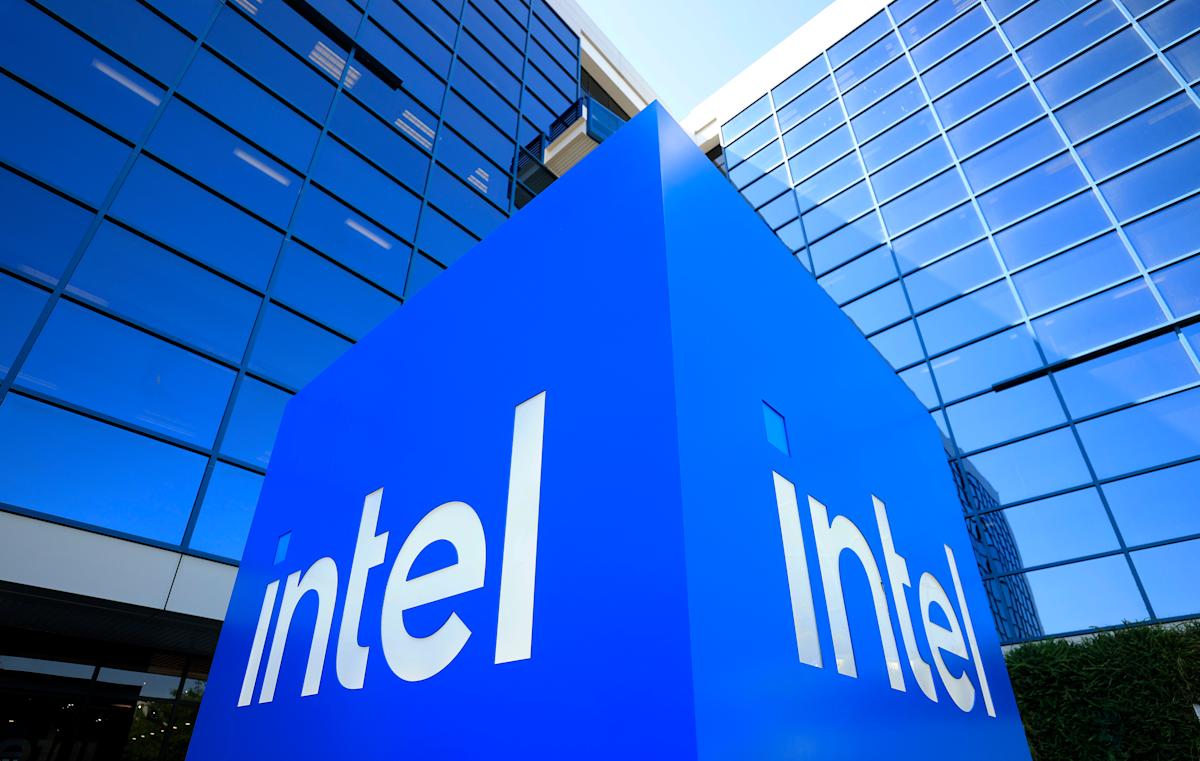Intel (INTC) stock jumped as much as much as 7% after the bell Thursday as the chipmaker reported third quarter earnings and revenue that topped Wall Street’s expectations.
Intel reported $13.7 billion in revenue for the three months ended Sept. 27, higher than the $13.15 billion expected by analysts tracked by Bloomberg and $13.28 billion the previous year. The chipmaker said that adjusted earnings per share was $0.23, above the $0.01 projected by Wall Street. The company reported a loss of $0.46 during the same period in 2024.
CEO Lip-Bu Tan said in a statement that “AI is accelerating demand for compute and creating attractive opportunities across our portfolio,” including the company’s closely-watched, struggling manufacturing business and its products.
“We believe we’re well-positioned to play a more significant role in AI,” added Intel’s head of investor relations John Pitzer in an interview with Yahoo Finance.
Intel said it expects fourth quarter adjusted EPS of $0.08, less than the $0.10 per share estimated by analysts, per Bloomberg consensus data. The chipmaker forecasts revenue of $13.3 billion at the midpoint of its projected range, below the $13.4 billion expected.
Intel said its fourth quarter guidance was below analyst estimates because the company’s projections don’t include revenue from Altera —a semiconductor firm owned by Intel that the company partly divested in the third quarter.
Intel’s third quarter results follow a slew of high-profile investments from the US government, Nvidia (NVDA), and SoftBank (9984.T). The government took a 9.9% stake in the chipmaker in late August, while Nvidia’s $5 billion investment amounted to a 4% ownership stake. The investments bolstered both Intel’s balance sheet and investor hopes for a turnaround under new chief executive Lip-Bu Tan.
Still, analysts and investors have said those investments do little to change the state of Intel’s struggling third-party manufacturing business, launched in 2021.
Intel’s manufacturing arm, Intel Foundry Services, reported an operating loss of $2.3 billion for the third quarter, wider than the $2.2 billion expected but an improvement from the $5.8 billion loss in the previous year.
Creative Strategies principal analyst Ben Bajarin told Yahoo Finance that, overall, Intel’s results Thursday were cause for “cautious optimism,” but looking ahead, “all eyes move to foundry.”
Wall Street fears that heavy spending on the relatively new segment may not pay off. So far, the business has failed to attract substantial commitments from outside customers. Policymakers, however, are heavily invested in the company’s success due to its geopolitical significance: Most of the world’s computing chips are made in Taiwan, and Intel is the only US-based, large-scale advanced semiconductor manufacturer.
Intel (INTC) stock jumped as much as much as 7% after the bell Thursday as the chipmaker reported third quarter earnings and revenue that topped Wall Street’s expectations.
Intel reported $13.7 billion in revenue for the three months ended Sept. 27, higher than the $13.15 billion expected by analysts tracked by Bloomberg and $13.28 billion the previous year. The chipmaker said that adjusted earnings per share was $0.23, above the $0.01 projected by Wall Street. The company reported a loss of $0.46 during the same period in 2024.
CEO Lip-Bu Tan said in a statement that “AI is accelerating demand for compute and creating attractive opportunities across our portfolio,” including the company’s closely-watched, struggling manufacturing business and its products.
“We believe we’re well-positioned to play a more significant role in AI,” added Intel’s head of investor relations John Pitzer in an interview with Yahoo Finance.
Intel said it expects fourth quarter adjusted EPS of $0.08, less than the $0.10 per share estimated by analysts, per Bloomberg consensus data. The chipmaker forecasts revenue of $13.3 billion at the midpoint of its projected range, below the $13.4 billion expected.
Intel said its fourth quarter guidance was below analyst estimates because the company’s projections don’t include revenue from Altera —a semiconductor firm owned by Intel that the company partly divested in the third quarter.
Intel’s third quarter results follow a slew of high-profile investments from the US government, Nvidia (NVDA), and SoftBank (9984.T). The government took a 9.9% stake in the chipmaker in late August, while Nvidia’s $5 billion investment amounted to a 4% ownership stake. The investments bolstered both Intel’s balance sheet and investor hopes for a turnaround under new chief executive Lip-Bu Tan.
Still, analysts and investors have said those investments do little to change the state of Intel’s struggling third-party manufacturing business, launched in 2021.
Intel’s manufacturing arm, Intel Foundry Services, reported an operating loss of $2.3 billion for the third quarter, wider than the $2.2 billion expected but an improvement from the $5.8 billion loss in the previous year.
Creative Strategies principal analyst Ben Bajarin told Yahoo Finance that, overall, Intel’s results Thursday were cause for “cautious optimism,” but looking ahead, “all eyes move to foundry.”
Wall Street fears that heavy spending on the relatively new segment may not pay off. So far, the business has failed to attract substantial commitments from outside customers. Policymakers, however, are heavily invested in the company’s success due to its geopolitical significance: Most of the world’s computing chips are made in Taiwan, and Intel is the only US-based, large-scale advanced semiconductor manufacturer.










Leave feedback about this